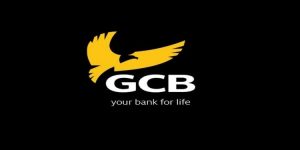Gold mining company Gold Fields on Thursday announced 33% higher normalized half-year earnings to $431-million, which has opened the way for the declaration of an increased interim dividend.
In line with its policy of paying between 25% and 35% of normalized profit as dividends, the Johannesburg- and New York-listed Gold Fields has declared an interim dividend of 210 South African (SA) cents a share, compared with the 160 SA cents a share for the corresponding period of last year.
Gold production of 1 104 000 oz was up on the 1 087 000 oz of last year from the nine operating mines of the globally diversified gold producer.
Gold Fields has mines in Australia, Chile, Ghana, including the Asanko joint venture, Peru and South Africa, and is ramping up the Salares Norte gold project in northern Chile.
Half-year free cash flow from the operations was $399-million with all-in cost (AIC) per ounce at $1 274/oz.
Gold Fields continued to deliver the average 10% higher gold price over the period to the bottom line, despite the increase in net operating costs.
South Africa’s South Deep had an improved second quarter after the impacts of the second wave of Covid-19 were felt during the first quarter. The mine produced 68 000 oz during the second quarter at an AIC of R658 180/kg ,or $1 443/oz, and an all-in sustaining cost (AISC) of R615 178/kg, or $1 350/oz, bringing first-half production to 128 000 oz at AIC of R674 965/kg ($1 444/oz). Encouragingly, trends continued to improve across key leading indicators during the quarter, Gold Fields stated in a release to Mining Weekly.
“We continue to deliver the higher gold price to the bottom line, with a further increase in normalized earnings,” new Gold Fields CEO Chris Griffith, who has been holding the reins for the past four-and-a-half months, stated.
His view is that the operations have had a good six months, despite the ongoing challenges presented by the Covid pandemic.
“We maintain both our production and cost guidance for the full year and expect to have a strong second half,” Griffith stated.
A large part of his time in recent months has been focused on interrogating the strategy of the company.
“I’m pleased to say, that, as I anticipated, the business is in a strong position,” he commented in noting the company’s production profile as being poised above the level of two-million ounces a year for the next decade, during which time it is anticipated that annual production will grow to 2.7-million ounces by 2024 before declining as some of the mines come to the end of their lives.
“We believe that we must now start looking at ways of preserving the value we have created beyond 2024,” Griffith added.
“We will maintain our current strategic focus on a portfolio of quality assets in good geographical and political jurisdictions, growing our mineral reserve and resource base, as well as focusing on value creation and capital discipline. This strategy has worked well for us over the past number of years.
Group AISC for the half-year of $1 093/oz was up on $987/oz in the 2020 half-year, an increase of 11% year-on-year, driven primarily by the strengthening of both the South African rand and the Australian dollar.
The average US dollar/rand exchange rate strengthened by 12% from R16.50 for last year’s six-month period to R14.54 for the six months ended June 30 this year.
Half-year AIC was 20% higher year-on-year at $1 274/oz not only on current strength but also the ramp-up of project capital at Salares Norte.
The net debt balance at the end of June was $1.097-billion, with the net debt to earnings ratio a low 0.49x.
The Australian region produced 246 000 oz at an AIC of $1 197/oz and an AISC of $1 118/oz, bringing production for H1 2021 to 481 000 oz at AIC of $1 189/oz.
Gold Fields’ mines in Ghana produced 219 000 oz, including 45% of Asanko, at an AIC of $1 150/oz and an AISC of $1 123/oz during the second quarter. For the six months, Ghana produced 440 000 oz at AIC of $1 114/oz.
The Cerro Corona gold/copper operation in Peru produced 53 000 oz of gold equivalent at an AIC of $1 165 per gold equivalent ounce (GEO) and AISC of $1 014/GEO during the June quarter, resulting in 99 000 oz of gold equivalent being produced at an AIC of $1 162/GEO.
The Salares Norte project absorbed $75-million of capital expenditure (capex) in the second quarter, taking total capex incurred on the project to date to $230-million. Total project progress is at 41.9%, ahead of the project plan of 41.4%. Owing to Covid, the percentage completion is expected to be at about 65% of completion at year end, compared with the 70% previously guided. Project completion remains on track for the first quarter of 2023. Relocation of the remaining Chinchilla on the property remains on hold until further notice from the authorities.
Second-quarter construction progressed by 7.5%, bringing the overall construction progress at the end of June to 30.8%, compared with the planned 31.1%. Snow and high winds impacted construction activities during June, while a pick-up in Covid cases in Chile impacted the availability of the workforce.
The remaining mass earthworks have been completed and installation of the leach and carbon-in-leach tanks is continuing. Foundational works for the mills and thickeners is to plan, while structural steel installation and construction of the reclaim tunnel has been progressed.
Approximately 4.9-million tonnes of pre-strip was moved during the second quarter, bringing the total volumes moved for the six months to 6.1-million tonnes.
District exploration involved second-quarter expenditure of $5-million, with 3 890 m drilled bringing total metres drilled during the first half of the year to 12 470 m, comfortably ahead of the planned 10 800 m.
Special tribute was paid to South Deep’s Vumile Mgcine, who died in a mining incident in April. “There is no more tragic reminder of the overriding importance of safety at our mines than the death of a colleague,” said Griffith, who also reported 15 Covid deaths in South Africa and Peru.







